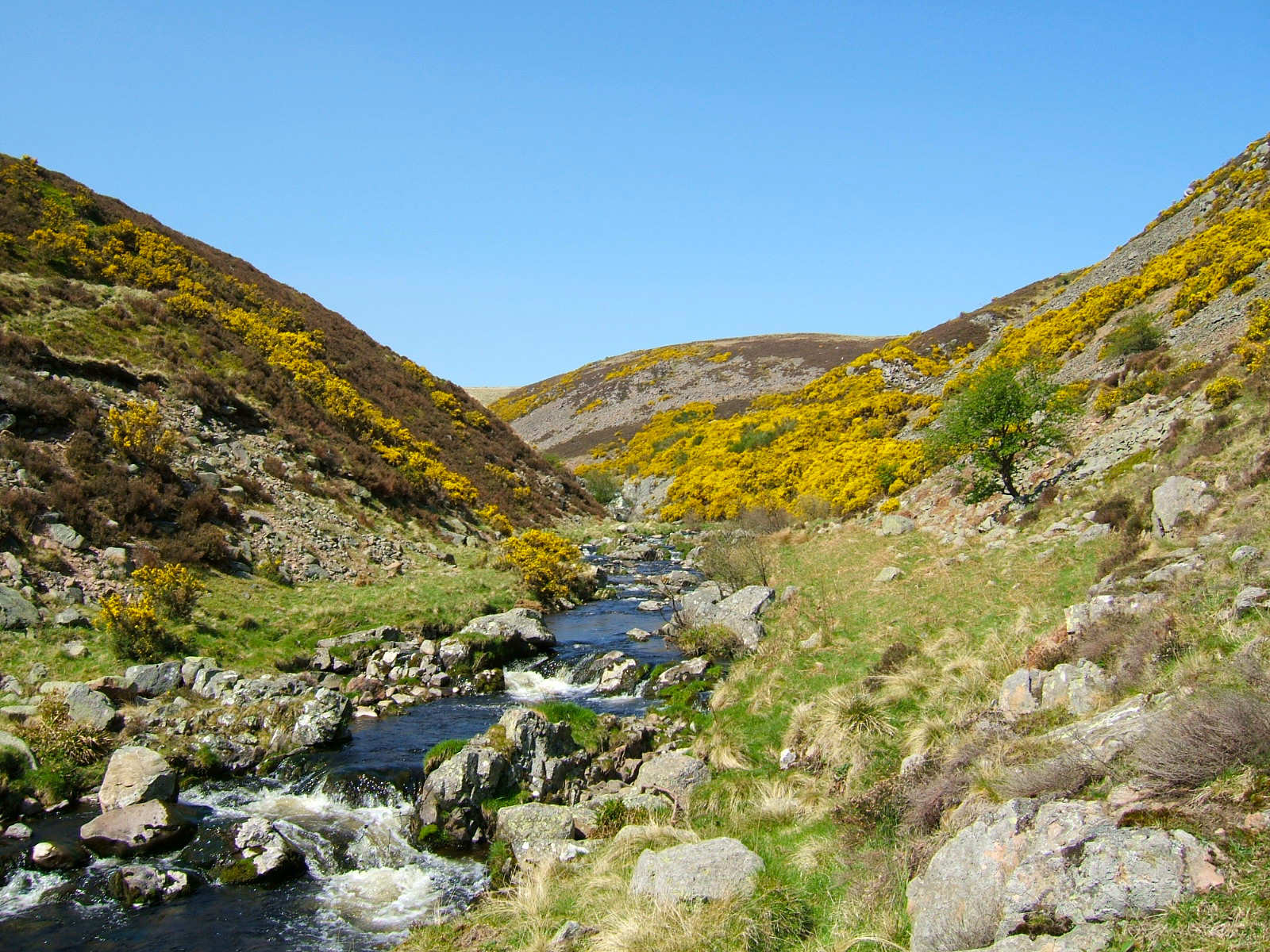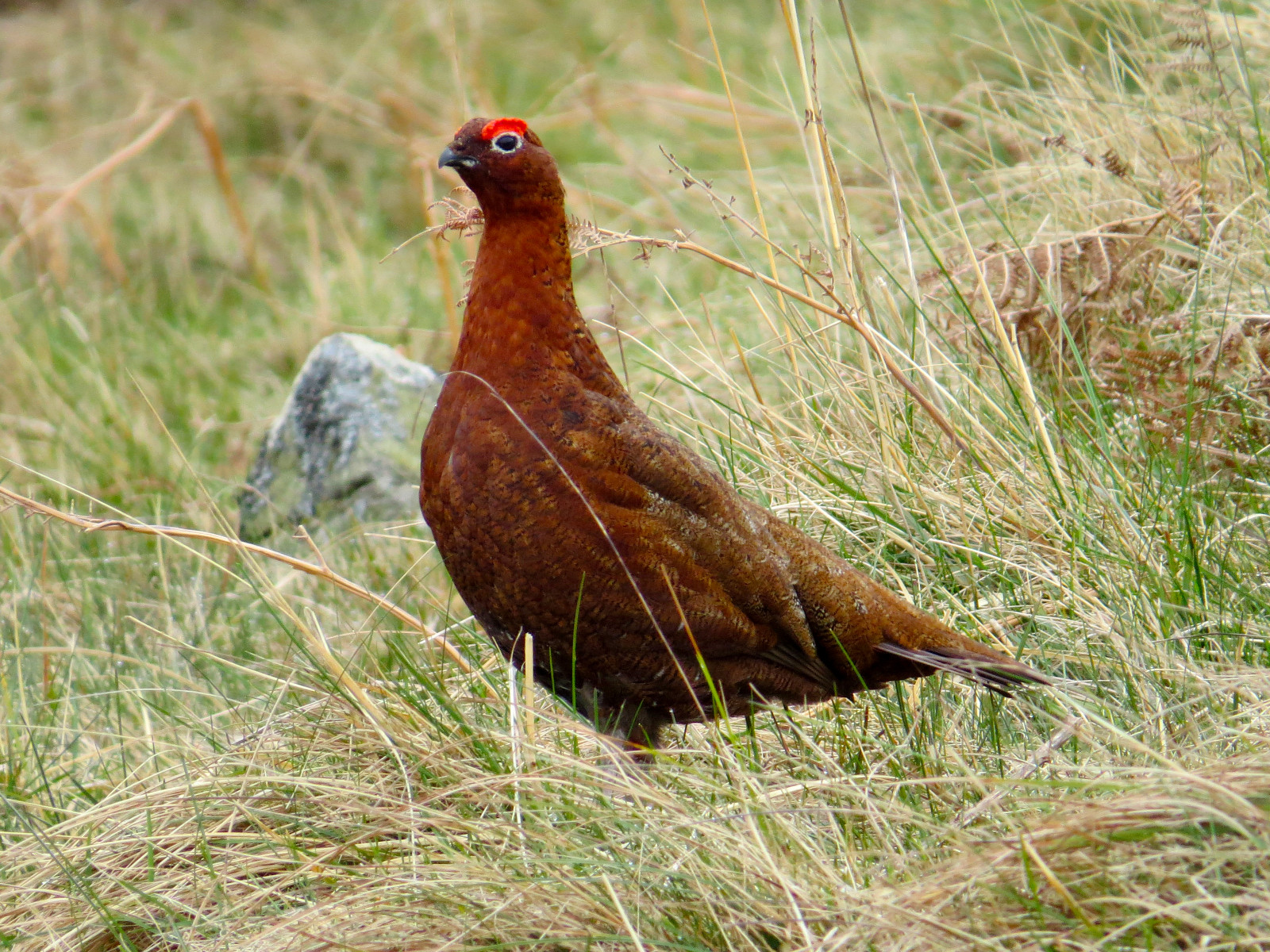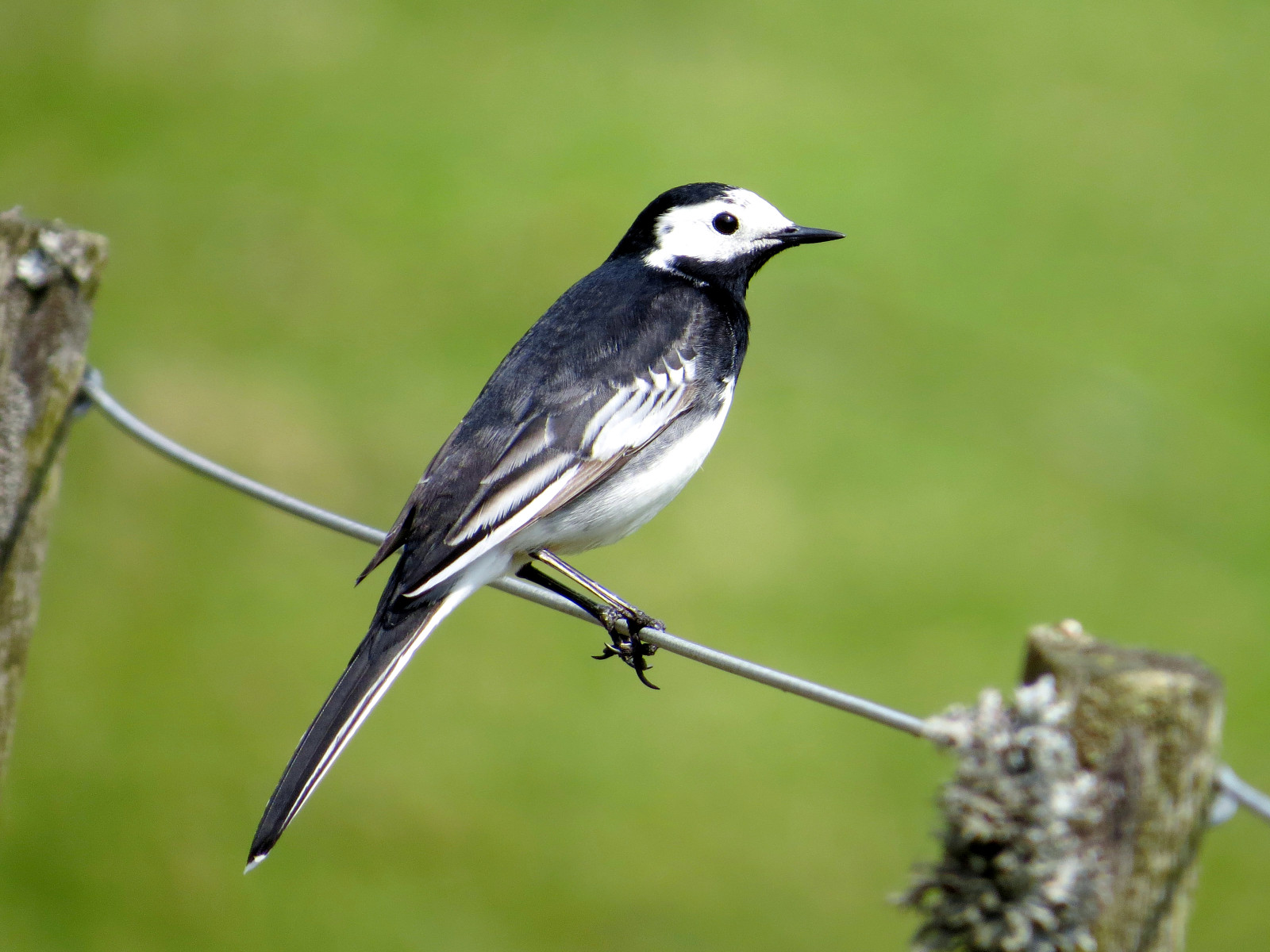Descrição
The Harthope is one of Northumberland's best upland valleys, with a mix of semi-natural Alder-Oak-Birch-Hazel woodland, Hawthorn scrub, sheep-grazed grass, and higher up, heather moors and some rocky crags and scree. The highest ground, on The Cheviot (815 m), is topped with blanket Sphagnum bog. If you are very lucky, the strenuous climb to the top may be rewarded with Borrelho-ruivo on migration in May or September.
In the higher, steeper parts of the valley, Melro-de-peito-branco breed, together with Chasco-cinzento. Large numbers of Petinha-dos-prados (the commonest bird here!) and Laverca breed on the more open grassy slopes. The heather moors have large populations of Lagópode-cinzento, sadly now managed for shooting; shooters also release large numbers of Perdiz-comum and Faisão every year, likely with major detrimental effects on native ground-nesting birds. The lower slopes and woods hold Pica-pau-verde and Cuco-canoro, and Cartaxo-comum is a recent colonist with milder winters allowing their survival. Warblers include Felosa-musical, Felosa-comum, Felosa-das-figueiras, Toutinegra-de-barrette-preto and Papa-amoras-comum. Few waders are present, but Galinhola are resident in small numbers and Ostraceiro and Maçarico-das-rochas breed along the Harthope Burn; there are also good numbers of Melro-d'água and Alvéola-cinzenta on the burn.
Sadly, the site has not escaped the general declines in so many species; several have disappeared or become very scarce in recent years. Petinha-das-árvores, Papa-moscas-preto, Chapim-palustre and Felosa-assobiadeira have all been lost or become hard to find, and even Rabirruivo-de-testa-branca and Cartaxo-nortenho are much harder to find than just a few years ago. Raptors too have also become less easy to find, with just a few Águia-d'asa-redonda and the odd Corvo, while Tartaranhão-azulado and falcão-peregrino have largely disappeared, probably due to illegal persecution related to the grouse shooting.
Like most upland sites, the area is bleak in winter, though deep snow seems to be largely a thing of the past. Despite this, good numbers of Tordo-ruivo-comum and Tordo-zornal can be found, and the Birch and Alder woods attract pintarroxo-pequeno and Lugre additional to the resident breeding numbers.
Detalhes
Acesso
Unfortunately, only accessible by car; no public transport nearby. Steep slopes on the road in make the site difficult for cyclists. Click on a P in the map for directions.
Terreno e Habitat
Floresta , Montanha , Desfiladeiro/precipício , Árvores e arbustos dispersos , Campina , Planalto , Vale , Zonas húmidas , RioCondições
Montanhoso , Plano , Pantanoso , Montanhoso , Rochoso , Paisagem abertaCaminho circular
Nãoé útil um telescópio?
Pode ser útilBoa temporada de observação de aves
Primavera , VerãoMelhor hora para visitar
PrimaveraRota
Estrada pavimentada , Caminho largo , Estrada não pavimentada , Caminho estreitoCaminho dificil
ExtenuanteAcessível por
Pé , CarroAbrigo/plataforma deobservação de aves
NãoInformação extra
This is one of the best places in Northumberland to see Adders (Vipera berus), Britain's only venomous snake, though they are not easy to find. Cool but sunny days in spring offer the best chances, when they come out into the open to bask in the sun. For their (and your own!) safety, do not touch them. Other 'non-birds' to look for include Common Toad, Roe Deer and Brown Hare.


